The US's oldest bomber is still flying around the world, and its crews are training like 'we're going to war'
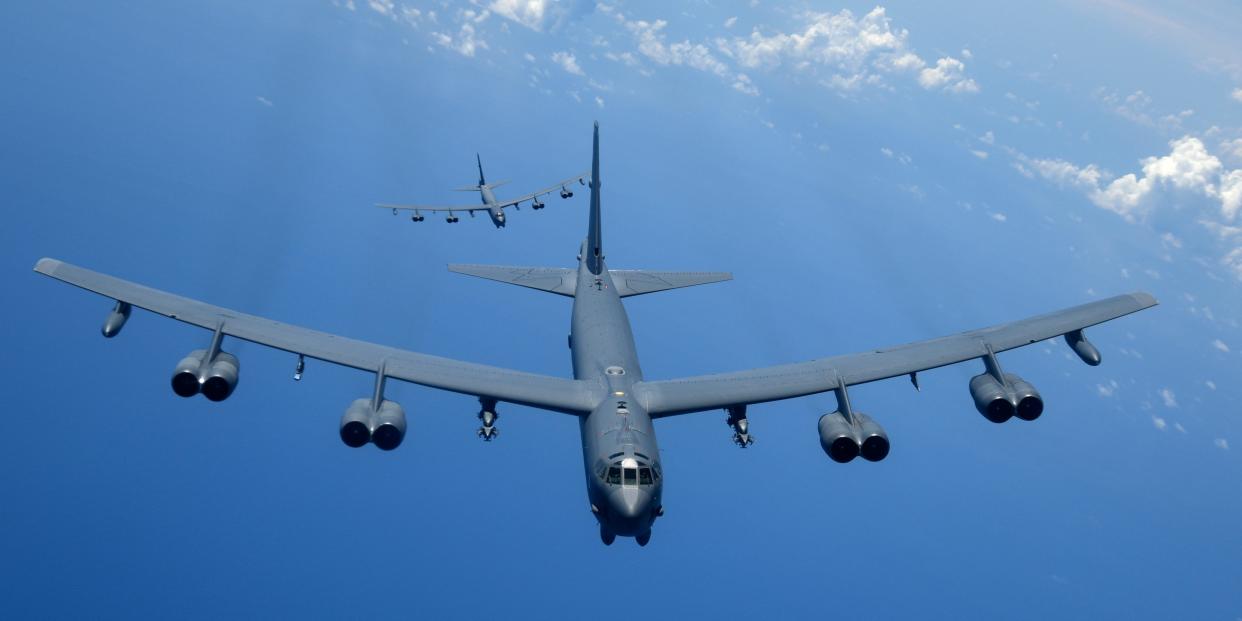
After more than a half-century in service, the B-52 is still flying around the world, often making non-stop, round-trip flights.
Those long-range missions are a testament to the bomber's longevity, but they're also preparation for growing strategic competition with powerful adversaries.
"When we have these opportunities to go out [on] those long durations, it really lets us practice what we're going to be doing if we're going to war," Air Force Lt. Col. Michael Middents told Insider.
Six decades after the first B-52 was delivered, the bomber is still a frontline aircraft, flying all over the world.
Five times since mid-November, B-52s have flown from the US to the Middle East and back on Bomber Task Force missions, part of an ongoing pressure campaign against Iran.
Defense officials say those missions are a prime example of dynamic force employment, in which aircraft fly overseas for short-term deployments or on non-stop flights to and from distant regions.
Dynamic force employment is about "trying to be strategically predictable but operationally unpredictable," said Air Force Lt. Col. Michael Middents, who led six B-52s on a five-week Bomber Task Force mission to the UK in August.
That doesn't change much for the crews, who get the same notice and preparation, but it provides an opportunity they can't get with flights around the US, Middents told Insider in October.
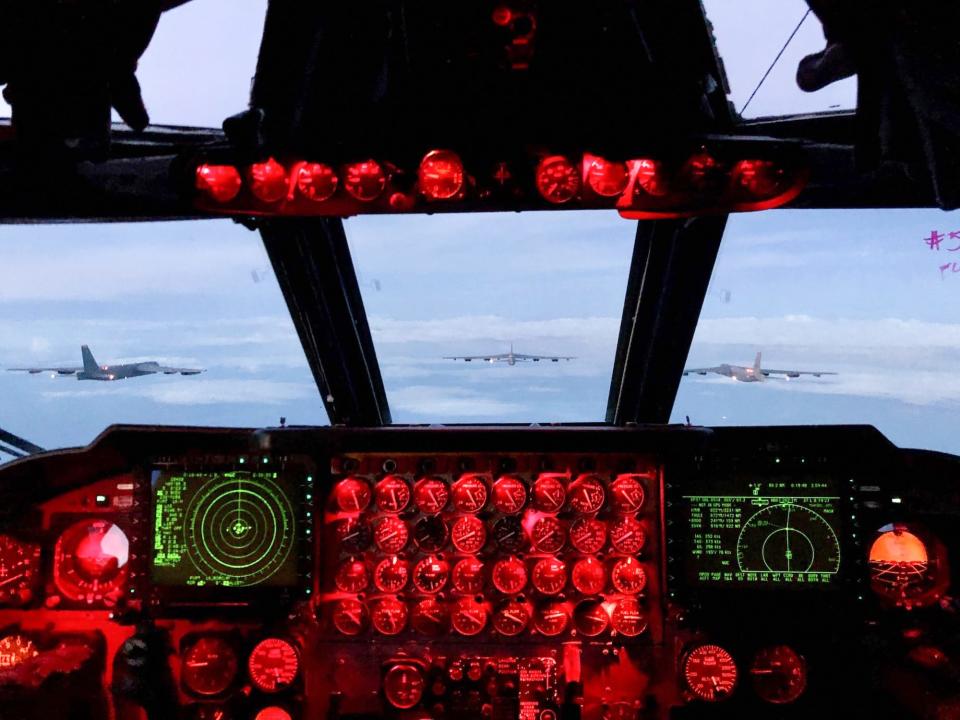
"When we have these opportunities to go out [on] those long durations, it really lets us practice what we're going to be doing if we're going to war," said Middents, commander of the 23rd Bomb Squadron at Minot Air Force Base in North Dakota.
"You have to manage sleep cycles beforehand, because it's never a convenient showtime to get out to the jets, take off, and to land at the desired time," Middents said. "Typically on a longer sortie, we're going to augment with a couple more crew members, so it's very crowded in the plane."
Bomber Task Force deployments take place around the world, but the Indo-Pacific region has been a particular focus.
"In the about nine months that we've been flying the Bomber Task Force, we've actually flown more of the bomber-type missions than we did in the last nine months of the continuous bomber presence," Gen. Kenneth Wilsbach, head of Pacific Air Forces, said in November, referring to a previous deployment model in which bombers operated from overseas bases for months at a time.
"Our adversaries, principally ... the Chinese Air Force, as well as the Russian Air Force, are paying close attention to our missions, and our allies and partners are really appreciating it," Wilsbach said.
Built solid
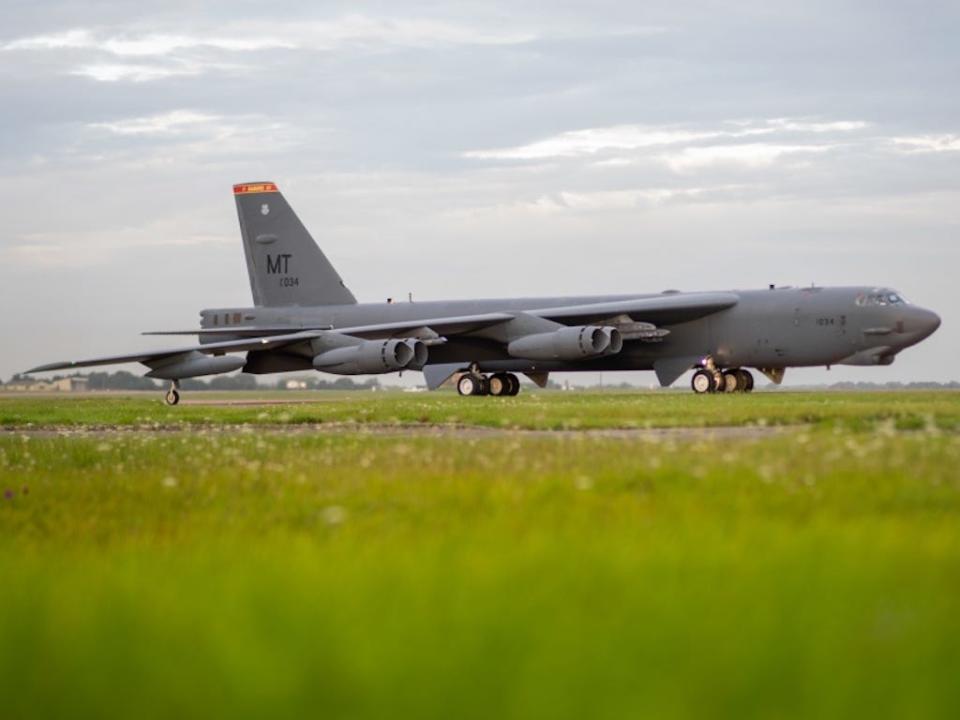
The first B-52 arrived in June 1955 and the last in October 1962. The Air Force now operates 76 of them, with two returning to service from long-term storage at an Arizona facility known as the "boneyard."
That longevity stems from it being "over-engineered," Mark Gunzinger, an air-warfare expert at the Mitchell Institute for Aerospace Studies, told Insider in an interview.
"It was designed to operate in a nuclear environment, and so the airframe is, frankly, one that can last multiple decades and is projected to last ... in the active inventory at least until 2050, which is amazing," added Gunzinger, who was also a B-52 copilot and instructor during a 20-year Air Force career.
"Man, they were built solid," Gen. Charles Q. Brown, Air Force chief of staff, said of the B-52 in October.
The bombers "sat alert for a good portion of the Cold War" and accumulated fewer flight hours, Brown added, and the Air Force closely tracks the flying they have done and the related strain, Gunzinger said.
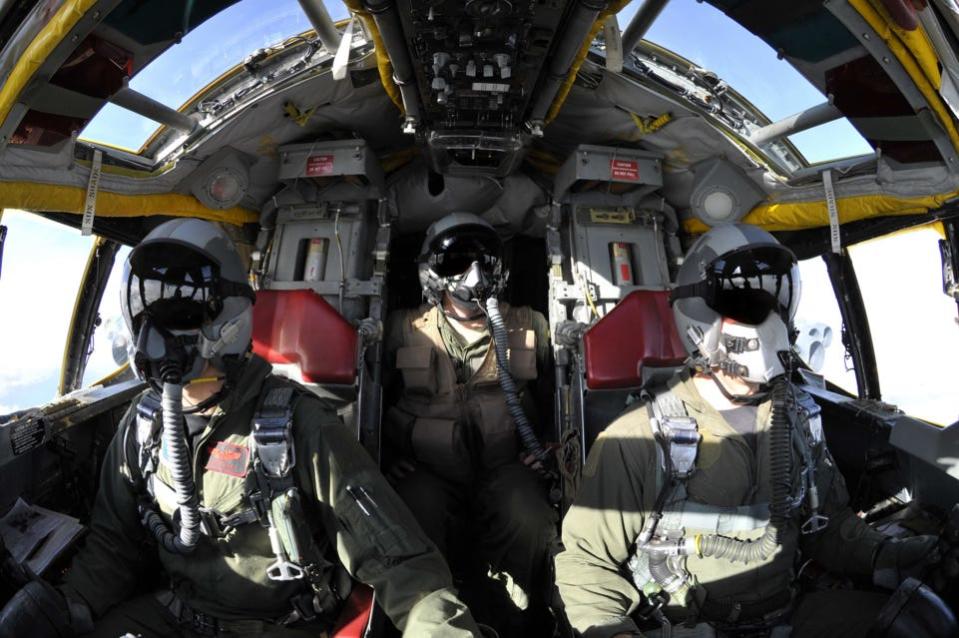
Its weapons, communications, and other systems have been updated over time, but the level of comfort for its operators hasn't changed.
The B-52 was built around its weapons, and "the air crew kind of fit in where it makes sense," Middents said. "It's us and the circuit breakers up front, but other than that, it's really built for the weapons and the gas."
It was "designed in an analog era and is still largely an analog aircraft," Gunzinger said, adding that it "doesn't have the most sophisticated autopilot" and maneuvers like aerial refueling require hand flying.
"It's just a strenuous aircraft to fly for a very long period of time," Gunzinger told Insider.
As a pilot in the early 1980s, Gunzinger did a 33-hour non-stop flight from North Dakota to Egypt, where the bomber conducted a low-level-strike demonstration for foreign officials.
"I'll tell you, we ran out of multiple cans of coffee and several cases of Coke through that flight," Gunzinger said, "but again, it stresses that this bomber fleet provides our nation with a unique capability to reach out globally ... to train with our allies, and to, if necessary, project lethal power."
'A few more reps'
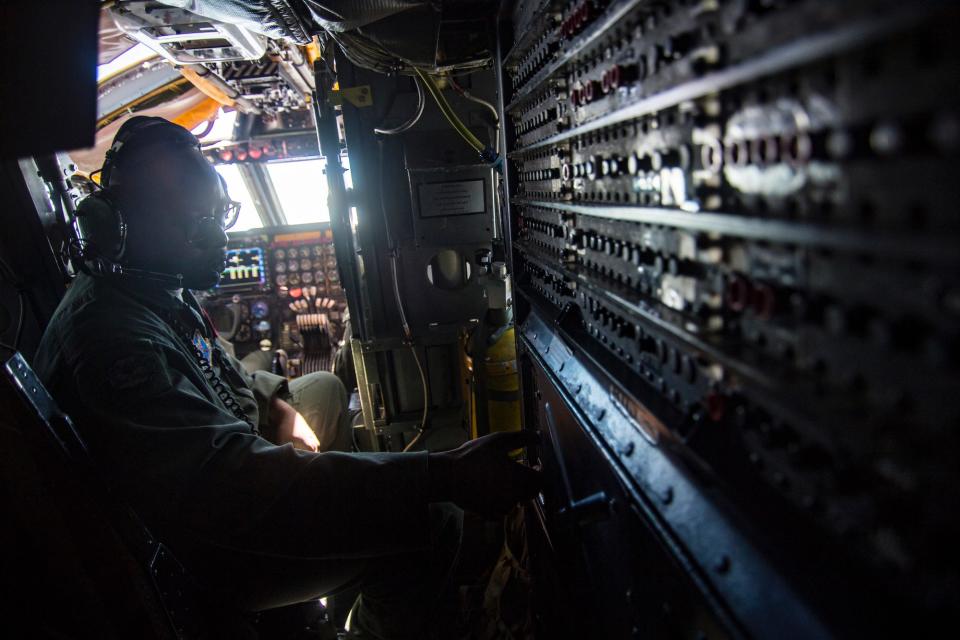
Middents led one of the first Bomber Task Force missions under dynamic force employment, which offers "a little bit more concentrated dose of flying," Middents said. "I'll tell you from the experience out there, the crews love it."
"Really, the hard part of that is the logistical side of it," Middents said. "We need our support footprint, our maintenance footprint, the medic corps, as well as operations."
Bringing the right equipment is particularly important. "We use a great aircraft with really good mission capability rate, but we do break down, so that was a huge part of the planning," Middents said.
Under the previous model, continuous bomber presence, facilities like Anderson Air Force Base in Guam became operational and logistical hubs. Other bases, like Fairford, don't have "such a robust footprint," Middents said.
"We've actually changed some of our logistics lines and capabilities so that we can get parts and pieces out there faster," Middents told Insider.
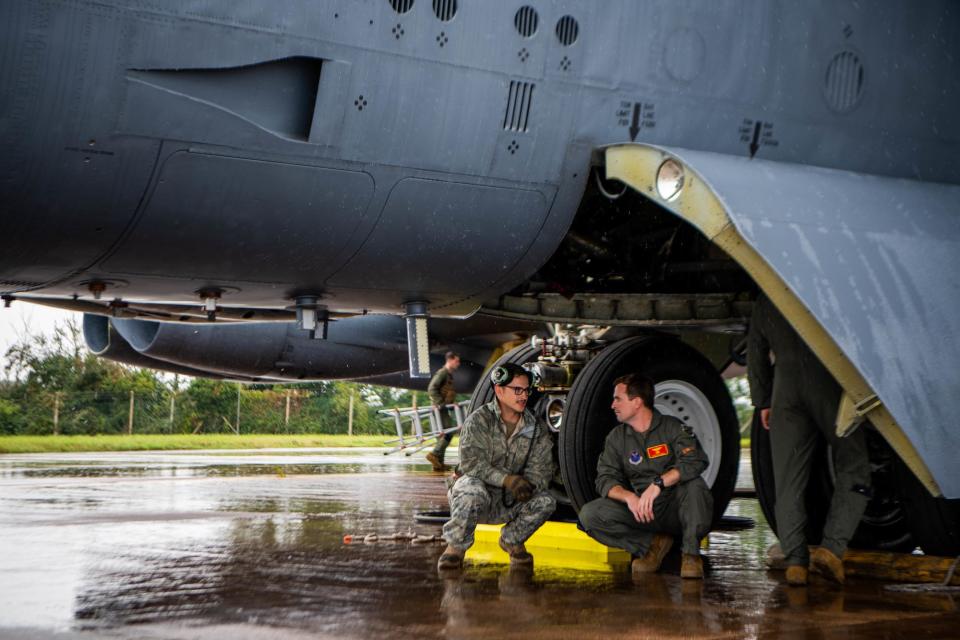
In Europe, Middents' B-52s conducted a single-day flight over all NATO member countries in Europe as well as operations over the Arctic, Eastern Europe, and North Africa.
In late August, a B-52 over the Black Sea had what the Air Force deemed an "unsafe, unprofessional" encounter with Russian fighter jets.
"When they're within 100 feet using afterburner to cut right in front of you, it causes an incredible amount of turbulence," Middents said. "You're going to feel that shaking, you're going to feel that rattling and, yeah, it creates quite an intense situation."
In early September, the B-52s "demonstrate[d] maritime interdiction capabilities" in the Mediterranean by intercepting the destroyer USS Roosevelt as it played the role of "a hostile vessel."
Maritime operations have long been part of the B-52's repertoire, but that exercise "was a few more reps at mission sets that we don't get as good training [for] ... up here in the plains of North Dakota," Middents said.
Better and better
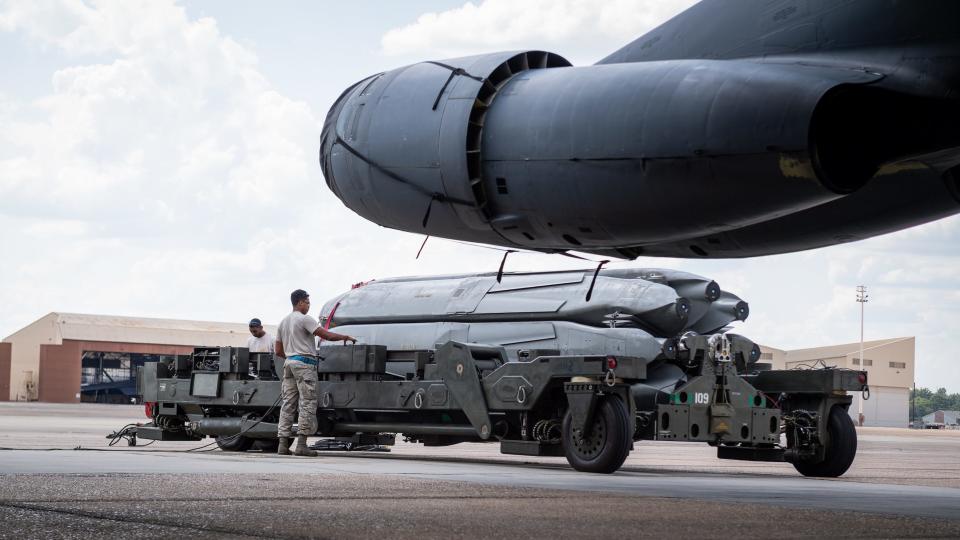
Adaptability is as much a factor as durability in the B-52's longevity. Designed to carry nuclear weapons, the bomber has been refitted for conventional payloads and, more recently, for precision-guided weapons.
The Air Force says it can carry "the widest array of weapons in the US inventory," ranging from sea mines to air-launched cruise missiles, the latter of which provide its nuclear capability.
The B-52's space, the weight it can carry, and the power it can generate "enables it to be modified, refitted to carry new weapons, [and] to carry [new] mission systems," Gunzinger said.
More upgrades are planned in the coming years, including a new longer-range radar, new computers and communications, and a expansion of the number and type of weapons it can carry.
"The bones of the B-52 are so good and so strong that as you continue to modernize and strap things in, it actually works pretty well," Middents said. "As far as putting stuff into the aircraft, I've been at it for about 15 years now, and I've seen several different revolutionary upgrades, and I'm actually pretty impressed with the way that it gets better and better every time."
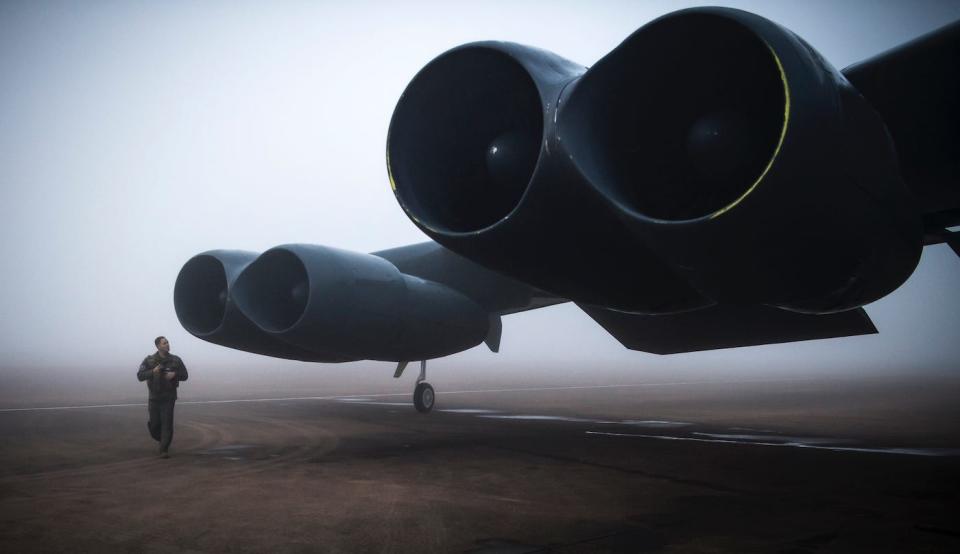
The last TF33 engine, eight of which are on each B-52, was built in 1985. The Air Force called for proposals for a new engine in May 2020 and expects to issue a contract this year. Officials say new engines will reduce fuel consumption and make maintenance easier.
"I think the B-52 modernization is going quite well," Adm. Charles Richard, who oversees US nuclear forces as head of US Strategic Command, told Insider at a press conference this month, adding that the upgrades include improvements to nuclear command, control, and communications.
Richard complimented Air Force leaders for devising "a very thoughtful plan to balance the need to have aircraft available to modernize them relative to having them available to conduct deterrence and conventional missions."
The Air Force expects production of the new engines to start in mid-2027. Around that time, the new B-21 bomber will arrive and the Air Force will phase out its B-1B and B-2 bombers, but the B-52 will hang on until 2050.
For Middents, flying the bomber as it approaches a century in service isn't a concern.
"I'd rather be in my B-52 than any modern airliner any day," Middents said.
Read the original article on Business Insider

